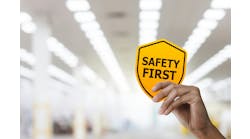Data analysis at local, edge or cloud levels can be visualized for better decision-making
Clark Kromenaker is product manager—HMI, IPC, controllers, software at Omron Automation.
What have been the biggest improvements to operator-interface technology in the past five years?
More objects and animations are being utilized to expose patterns to the machine operator to present machine status in an intuitive way. Particularly in larger, complex automated equipment where much of the machine is not visible to an operator, decisions need to be made based on the information on the display.
Also read: HMIs create a window of opportunity
The images on the display are designed to impart understanding of machine status for the operator to make an informed choice of actions. Some of these more advanced imaging might include Sunburst, Tree Map or Radar Chart representations in addition to conventional buttons and indicators.
Of course, the Industrial Internet of Things (IIoT) and Manufacturing 4.0 loom large in the application of visualization via operator-interface devices. Here the results of data analysis at the local control system, edge or cloud can now be visualized on the machine and presented to the operator. Not only one machine can be viewed, but collective data can be remotely collected, analyzed, visualized and presented to operators or interested parties for human decision-making.
What’s the most innovative or efficient operator-interface technology application you’ve ever seen or been involved with?
Clark Kromenaker, product manager—HMI, IPC, controllers, software, Omron Automation: Probably the most impressive visualizations are the larger supervisory-control-and-data-acquisition-based systems where the control area is a large geographical area, for example, wind farm, power transmission, oil and gas refineries or water/wastewater applications. A supervisory-control-and-data-acquisition (SCADA) system can host a wide range of controllers, devices and networks and is often referred to as vendor-agnostic. With a SCADA system, the operator-interface imagery is very descriptive visually and is often available at more than one location or on large displays in control rooms. Often camera imagery is included in the display to augment animations. Since SCADA is an industrial-PC-based system on a Windows OS, data collection and analysis can run alongside on the same industrial PC.
Also read: Membrane puts the human in HMI
Although a SCADA system offers wide-ranging capabilities, it is used in manufacturing, as well; integration into the various vendor products is usually more complex than a conventional operator interface and some areas preclude Windows-based OS systems for security reasons.
What's Omron's state-of-the-art operator-interface technology for manufacturing.
Most meet NEMA 4X/IP65 ratings for use in harsh environments. Our NB series of operator interfaces provides a more basic visualization solution for smaller or simpler machines and applications. Our NA5 series of operator interfaces is our higher-end operator interface and offers wide-extended-graphics-array (WXGA) class resolution. Our NY series of industrial PCs offers WXGA class resolution and has maximum flexibility to run SCADA software or run-time visualization software in addition to machine-control capability of the Omron Sysmac controller (Figure 1).
Omron operator-interface devices operate on a closed operating system (OS), which offers high resistance to malware.
Also read: Get back to physical interfaces







